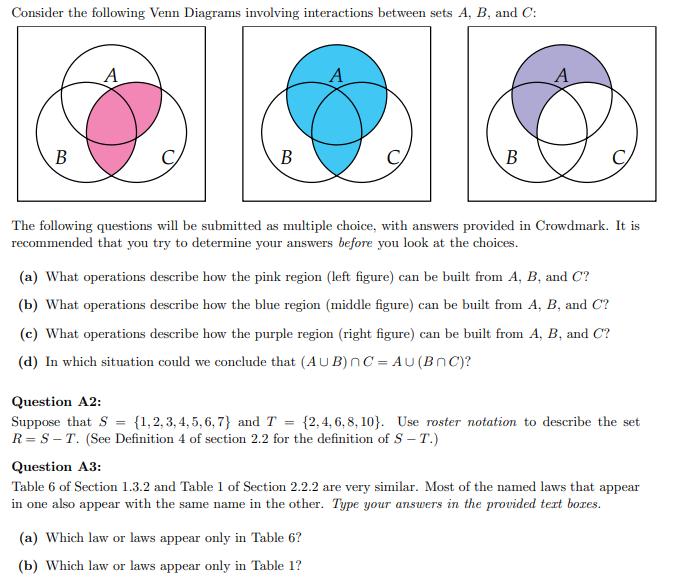Answered step by step
Verified Expert Solution
Question
1 Approved Answer
Consider the following Venn Diagrams involving interactions between sets 4, B, and 7 The following questions will be submitted as multiple choice, with answers provided

Consider the following Venn Diagrams involving interactions between sets A, B, and C: B A B B The following questions will be submitted as multiple choice, with answers provided in Crowdmark. It is recommended that you try to determine your answers before you look at the choices. (a) What operations describe how the pink region (left figure) can be built from A, B, and C? (b) What operations describe how the blue region (middle figure) can be built from A, B, and C? (c) What operations describe how the purple region (right figure) can be built from A, B, and C? (d) In which situation could we conclude that (AUB) nC = AU (BNC)? Question A2: == Suppose that S = {1, 2, 3, 4, 5, 6, 7} and T = {2,4,6,8, 10}. Use roster notation to describe the set R=S-T. (See Definition 4 of section 2.2 for the definition of S-T.) Question A3: Table 6 of Section 1.3.2 and Table 1 of Section 2.2.2 are very similar. Most of the named laws that appear in one also appear with the same name in the other. Type your answers in the provided text boxes. (a) Which law or laws appear only in Table 6? (b) Which law or laws appear only in Table 1?
Step by Step Solution
There are 3 Steps involved in it
Step: 1

Get Instant Access to Expert-Tailored Solutions
See step-by-step solutions with expert insights and AI powered tools for academic success
Step: 2

Step: 3

Ace Your Homework with AI
Get the answers you need in no time with our AI-driven, step-by-step assistance
Get Started


